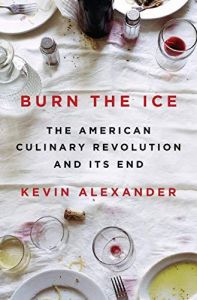
Burn the Ice
The American Culinary Revolution and Its End
From BURN THE ICE by Kevin Alexander Summarized by arrangement with Penguin Press, an imprint of Penguin Publishing Group, a division of Penguin Random House LLC.
ISBN: 9780525558026
Pages: 384
Recommendation
In the new millennium, American dining underwent a resurgence that may have peaked. Chefs rediscovered obscure ingredients, bartenders reincarnated classic cocktails and food trucks served gourmet fare. Every detail became a big thing: cheeseburgers, hot sauce, pizza, coffee, exotic cuisines, ramen stalls, craft breweries and small distilleries. Food journalist Kevin Alexander (writing before COVID-19 wreaked havoc on the restaurant industry) chronicles this era with wit and insight, tracing trailblazing chefs and restaurateurs who redrew the culinary landscape.
Summary
About the Author
Kevin Alexander is a food journalist and writer-at-large for Thrillist. A James Beard Award winner, he contributes to Esquire, Men’s Journal, The Boston Globe, Howler and other publications.
















Comment on this summary